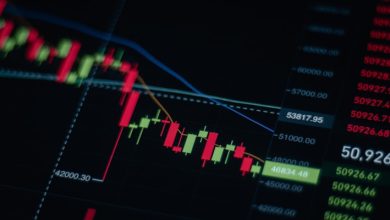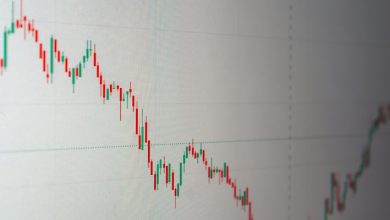Bull Markets vs. Bear Markets: What Crypto Traders Need to Know

- Understanding Bull Markets and Bear Markets in Crypto Trading
- Key Differences Between Bull Markets and Bear Markets
- Strategies for Thriving in Bull Markets
- How to Safeguard Your Investments During Bear Markets
- Navigating the Volatility of Crypto Markets
- Psychological Factors to Consider in Bull and Bear Markets
Understanding Bull Markets and Bear Markets in Crypto Trading
Understanding bull markets and bear markets in crypto trading is essential for any trader looking to navigate the volatile world of cryptocurrency. A bull market refers to a period of rising prices and positive investor sentiment, while a bear market is characterized by falling prices and pessimism among investors.
During a bull market, traders are optimistic about the future prospects of a particular cryptocurrency or the market as a whole. This optimism often leads to increased buying activity, which drives prices higher. Traders may take advantage of this trend by buying low and selling high, or by holding onto their investments in anticipation of further gains.
On the other hand, a bear market is marked by a general sense of negativity and fear among traders. Prices are falling, and many investors may be looking to sell their holdings to limit their losses. During a bear market, traders may employ strategies such as short selling or hedging to protect their investments from further declines.
It is important for crypto traders to be able to identify whether the market is in a bull or bear phase, as this can help inform their trading decisions. By understanding the characteristics of each type of market, traders can develop strategies to capitalize on opportunities and mitigate risks in any market environment.
Key Differences Between Bull Markets and Bear Markets
When it comes to understanding the dynamics of the cryptocurrency market, it’s crucial to grasp the key differences between bull markets and bear markets. These terms are used to describe the overall direction of a market and can have a significant impact on trading strategies. Here are some key distinctions between bull and bear markets:
- Market Sentiment: One of the most notable differences between bull and bear markets is the prevailing sentiment among investors. In a bull market, traders are optimistic about the future performance of assets, leading to an increase in buying activity. On the other hand, in a bear market, pessimism dominates, causing selling pressure and a decline in prices.
- Price Trends: In a bull market, prices tend to rise over an extended period, creating opportunities for traders to profit from upward momentum. Conversely, bear markets are characterized by falling prices, presenting challenges for traders who may need to adapt their strategies to navigate the downturn.
- Volatility: Bull markets are often associated with lower volatility, as steady price increases can dampen fluctuations. In contrast, bear markets tend to exhibit higher volatility, with prices swinging more erratically as sentiment shifts among investors.
- Investor Behavior: During a bull market, investors may display more risk tolerance, taking on greater exposure to assets in anticipation of further gains. In contrast, bear markets can lead to risk aversion, as investors seek to protect their capital from further losses.
- Duration: Bull markets are typically longer in duration than bear markets, with sustained periods of positive performance drawing in more participants. Bear markets, on the other hand, are often shorter but more intense, as selling pressure accelerates the decline in prices.
Strategies for Thriving in Bull Markets
In a bull market, traders can implement various strategies to thrive and maximize their profits. One effective strategy is to ride the momentum by buying assets that are trending upwards. This can help traders capitalize on the positive market sentiment and potentially earn significant returns. Additionally, diversifying their portfolio can help traders mitigate risk and take advantage of multiple opportunities in the market. By spreading their investments across different assets, traders can protect themselves from potential losses if a single asset underperforms.
Another strategy for thriving in a bull market is to set clear profit targets and stop-loss orders. By establishing these levels in advance, traders can prevent themselves from getting carried away by greed and making impulsive decisions. It is essential to stick to the predetermined targets and not let emotions dictate trading actions. Furthermore, staying informed about market developments and conducting thorough research can give traders a competitive edge. By staying ahead of the curve, traders can identify emerging trends and capitalize on lucrative opportunities before the majority of the market catches on.
Moreover, it is crucial for traders to remain disciplined and avoid FOMO (fear of missing out) during a bull market. While it can be tempting to chase quick gains, it is important to stay rational and not deviate from the established trading plan. Patience and consistency are key to long-term success in the crypto market. By following a well-thought-out strategy and sticking to it, traders can navigate the ups and downs of a bull market with confidence and resilience.
How to Safeguard Your Investments During Bear Markets
During bear markets, it is crucial to take steps to safeguard your investments and minimize potential losses. Here are some strategies that crypto traders can employ to protect their portfolios:
- Diversification: One of the most effective ways to mitigate risk during a bear market is to diversify your investment portfolio. By spreading your investments across different assets, you can reduce the impact of a downturn in any one market.
- Stop-loss orders: Setting stop-loss orders can help you limit your losses by automatically selling your assets if they reach a certain price. This can prevent you from holding onto a declining asset in the hopes that it will rebound.
- Stay informed: Keeping up to date with market trends and news can help you make more informed decisions about your investments. By staying informed, you can better anticipate market movements and adjust your strategy accordingly.
- Consider hedging: Hedging involves making investments that are negatively correlated with your existing holdings. This can help offset losses in one part of your portfolio with gains in another, reducing overall risk.
- Patience and discipline: It can be tempting to panic sell during a bear market, but it is important to remain patient and disciplined. Markets are cyclical, and downturns are often followed by periods of growth. By staying the course, you can position yourself for long-term success.
Navigating the Volatility of Crypto Markets
Navigating the volatility of cryptocurrency markets can be a challenging endeavor for traders. The unpredictable nature of these markets means that prices can fluctuate wildly in a short period of time, making it difficult to anticipate trends and make informed decisions. However, there are strategies that traders can employ to help mitigate the risks associated with market volatility.
One key strategy is to diversify your portfolio across different cryptocurrencies. By spreading your investments across a range of assets, you can reduce the impact of any one asset’s price movement on your overall portfolio. This can help to protect your investments from sudden market downturns and minimize potential losses.
Another important strategy is to set stop-loss orders on your trades. Stop-loss orders automatically sell your assets if their price reaches a certain point, helping to limit your losses in the event of a market crash or sudden price drop. By setting stop-loss orders, you can protect your investments and prevent yourself from making impulsive decisions based on market fluctuations.
Additionally, it’s important to stay informed about market trends and news that could impact cryptocurrency prices. By staying up-to-date on developments in the cryptocurrency space, you can make more informed trading decisions and position yourself to take advantage of potential opportunities in the market.
Overall, navigating the volatility of cryptocurrency markets requires a combination of strategic thinking, risk management, and staying informed. By employing these strategies and staying disciplined in your trading approach, you can better navigate the ups and downs of the crypto market and increase your chances of success as a trader.
Psychological Factors to Consider in Bull and Bear Markets
One of the key factors that can greatly impact crypto traders in both bull and bear markets is psychological. Understanding how psychological factors influence market behavior can help traders make more informed decisions. In bull markets, traders may experience feelings of euphoria and overconfidence, leading them to take on more risk than they can handle. On the other hand, in bear markets, traders may feel fear and panic, causing them to sell off their assets at a loss. It is essential for traders to be aware of these psychological tendencies and try to remain level-headed in their decision-making process.
In bull markets, traders may exhibit a phenomenon known as “herd mentality,” where they follow the crowd without conducting their research. This can lead to inflated asset prices and ultimately a market bubble that is unsustainable. Traders should be cautious of blindly following the herd and instead focus on conducting thorough research and analysis before making any trading decisions. Additionally, in bear markets, traders may fall victim to “loss aversion,” where they are more focused on avoiding losses rather than seeking gains. This can lead to missed opportunities for profit as traders may be too quick to sell off assets out of fear.
Another important psychological factor to consider in both bull and bear markets is the impact of cognitive biases on decision-making. Traders may be influenced by biases such as confirmation bias, where they seek out information that confirms their existing beliefs, and recency bias, where they give more weight to recent events rather than looking at the bigger picture. Being aware of these biases and actively working to counteract them can help traders make more rational and logical decisions in the volatile crypto market.
Overall, understanding the psychological factors at play in bull and bear markets is crucial for crypto traders looking to navigate these volatile market conditions successfully. By being aware of the emotional tendencies that can influence trading decisions, traders can work towards developing a more disciplined and strategic approach to their trading activities.



